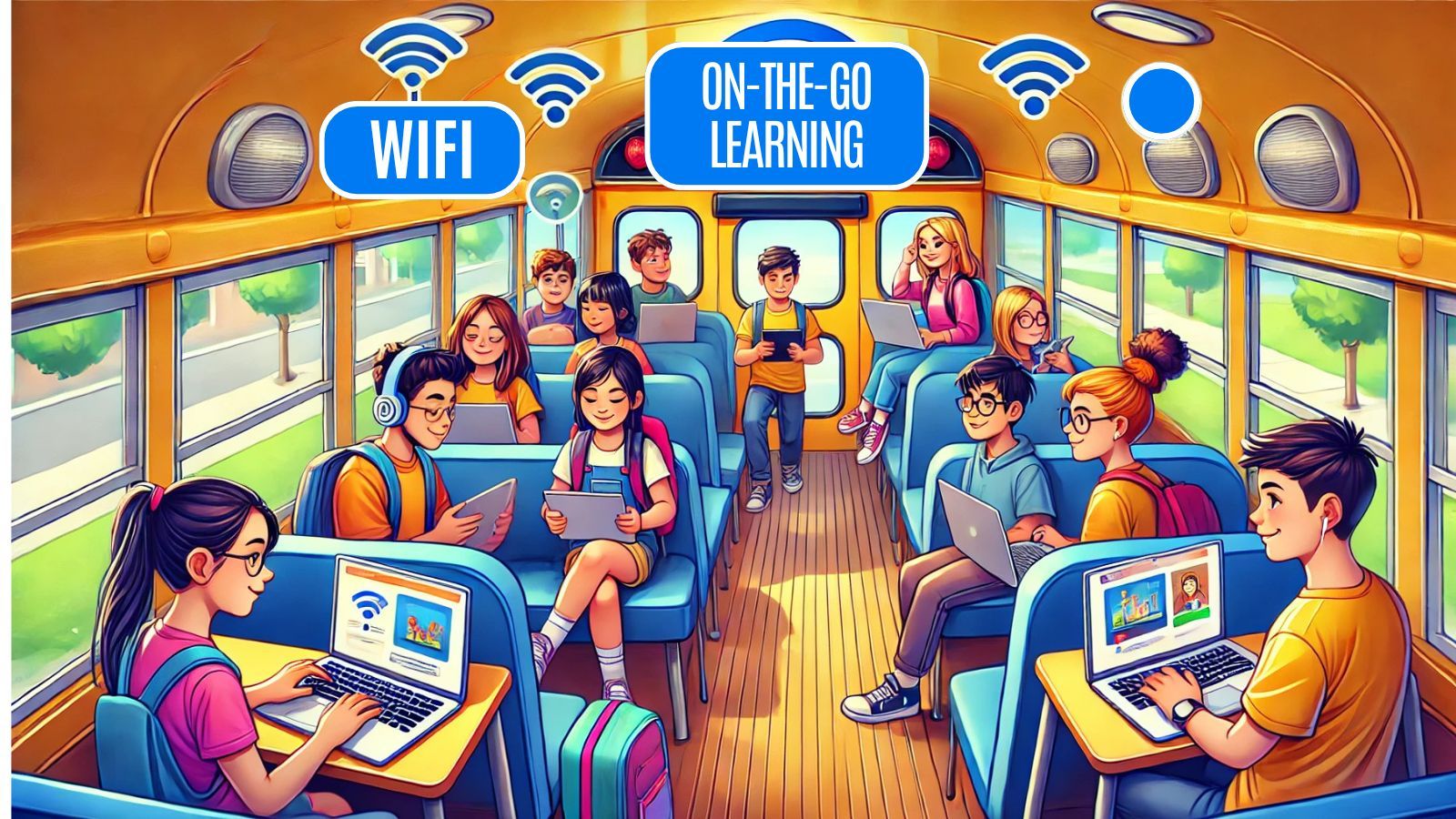On-the-Go Learning: Maximizing Educational Opportunities with School Bus WiFi
Mar 16, 2025
In today’s fast-paced digital world, learning is no longer confined to the four walls of a classroom. With advances in mobile connectivity, school buses are emerging as powerful extensions of the classroom. By integrating WiFi into school buses, educational institutions are transforming daily commutes into dynamic learning environments—enabling students to tap into digital resources, engage in interactive lessons, and even participate in virtual field trips while on the move.
Extending the Classroom Beyond School Walls
Traditionally, the school bus has been seen merely as a mode of transportation. However, with reliable WiFi connectivity, this daily journey can now serve a dual purpose: transporting students and delivering educational content. Mobile connectivity on buses offers several benefits:
- Continuous Learning: Students can access educational platforms and digital textbooks during their commute, ensuring that learning doesn’t stop when the bell rings.
- Bridging the Gap: For students who may not have consistent access to high-speed internet at home, bus WiFi provides an additional resource to stay connected and engaged.
- Enhanced Engagement: The ability to interact with educational apps and online content during transit transforms passive travel time into an opportunity for active learning.
Innovative Approaches to On-the-Go Learning
Educators are quickly recognizing the potential of on-the-go learning and are adopting creative strategies to make the most of school bus WiFi. Some innovative approaches include:
- Interactive Lessons: Teachers can design bite-sized lessons tailored for the bus ride, such as quick quizzes or educational games that reinforce morning lessons. This helps students recall information and sets a positive tone for the day.
- Virtual Field Trips: With internet access on board, students can embark on virtual journeys to museums, historical sites, or even explore different cultures—turning a simple ride into an educational adventure.
- Homework Help and Tutoring: Bus WiFi can be leveraged to offer homework support or tutoring sessions. Live chat sessions or access to online tutoring platforms can provide students with assistance as soon as questions arise.
- Real-Time Collaboration: Collaborative projects or group discussions can take place during the ride. Students can use cloud-based platforms to work on projects together, even while commuting.
Practical Examples of On-the-Go Learning in Action
Consider a school district that recently piloted a program integrating WiFi-enabled buses. During the morning ride, teachers sent out a series of interactive polls and trivia questions related to the day’s upcoming lessons. The immediate engagement not only warmed up students’ minds but also provided valuable feedback on their understanding of previous topics.
In another instance, a middle school organized a virtual tour of a local historical museum during a field trip. While the bus was on the move, students explored exhibits online, engaged with interactive displays, and even participated in a live Q&A session with a museum guide. These examples illustrate how on-the-go learning transforms ordinary commutes into rich educational experiences that extend far beyond traditional classroom boundaries.
Actionable Tips for Optimizing School Bus WiFi
For schools looking to adopt or enhance their mobile learning programs through bus WiFi, here are some actionable strategies:
- Ensure Robust Connectivity: Invest in high-quality WiFi solutions that provide reliable and secure internet access across the bus. Consistent connectivity is crucial for a smooth learning experience.
- Prioritize Security: Work with IT professionals to implement secure networks and safeguard student data. A secure WiFi environment is essential to protect both the school’s and students’ privacy.
- Develop Tailored Content: Create or curate engaging, bite-sized educational content that can be easily consumed during a short commute. Interactive modules, quizzes, and short videos are excellent formats for on-the-go learning.
- Train Educators: Equip teachers with the knowledge and tools to integrate bus WiFi into their lesson plans effectively. Professional development sessions can help educators explore new teaching methodologies suited for mobile environments.
- Gather Feedback: Regularly solicit feedback from students, teachers, and parents to understand what’s working and where improvements can be made. This iterative process helps in fine-tuning the mobile learning experience.
Conclusion
The integration of WiFi on school buses is redefining what it means to be a “mobile learner.” By extending the classroom into the transit space, educators can harness every minute of the day to enrich student learning experiences. From interactive lessons and virtual field trips to real-time tutoring, on-the-go learning opens up a world of opportunities that empower students to succeed academically and beyond.
By embracing these innovative strategies and optimizing connectivity, schools can turn the daily bus ride into a dynamic, interactive, and engaging educational journey. The future of learning is not confined to static classrooms—it’s moving with us, one bus ride at a time.
SUBSCRIBE TO THE BLOG
Don't miss the opportunity to transform your instructional and leadership practices. Subscribe now and receive transformative insights and strategies with every post.
We hate SPAM. We will never sell your information, for any reason.

